Edge depicted Black & White Stock Photos
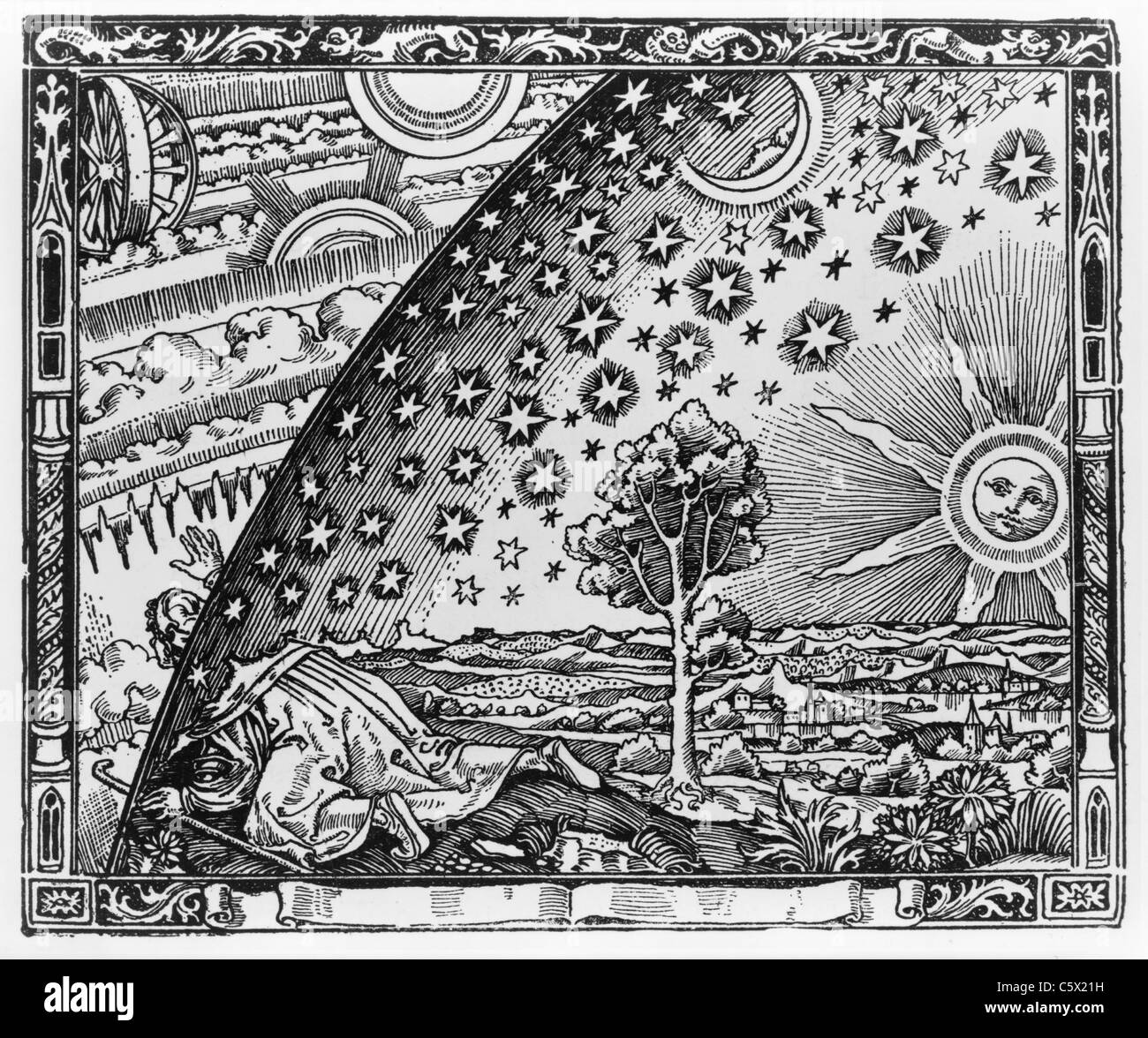 Un Missionnaire - 18th Century wood engraving represents the search for & beyond the boundaries of knowledge, depicted as the edge of a sphere. Stock Photohttps://www.alamy.com/image-license-details/?v=1https://www.alamy.com/stock-photo-un-missionnaire-18th-century-wood-engraving-represents-the-search-38066381.html
Un Missionnaire - 18th Century wood engraving represents the search for & beyond the boundaries of knowledge, depicted as the edge of a sphere. Stock Photohttps://www.alamy.com/image-license-details/?v=1https://www.alamy.com/stock-photo-un-missionnaire-18th-century-wood-engraving-represents-the-search-38066381.htmlRFC5X21H–Un Missionnaire - 18th Century wood engraving represents the search for & beyond the boundaries of knowledge, depicted as the edge of a sphere.
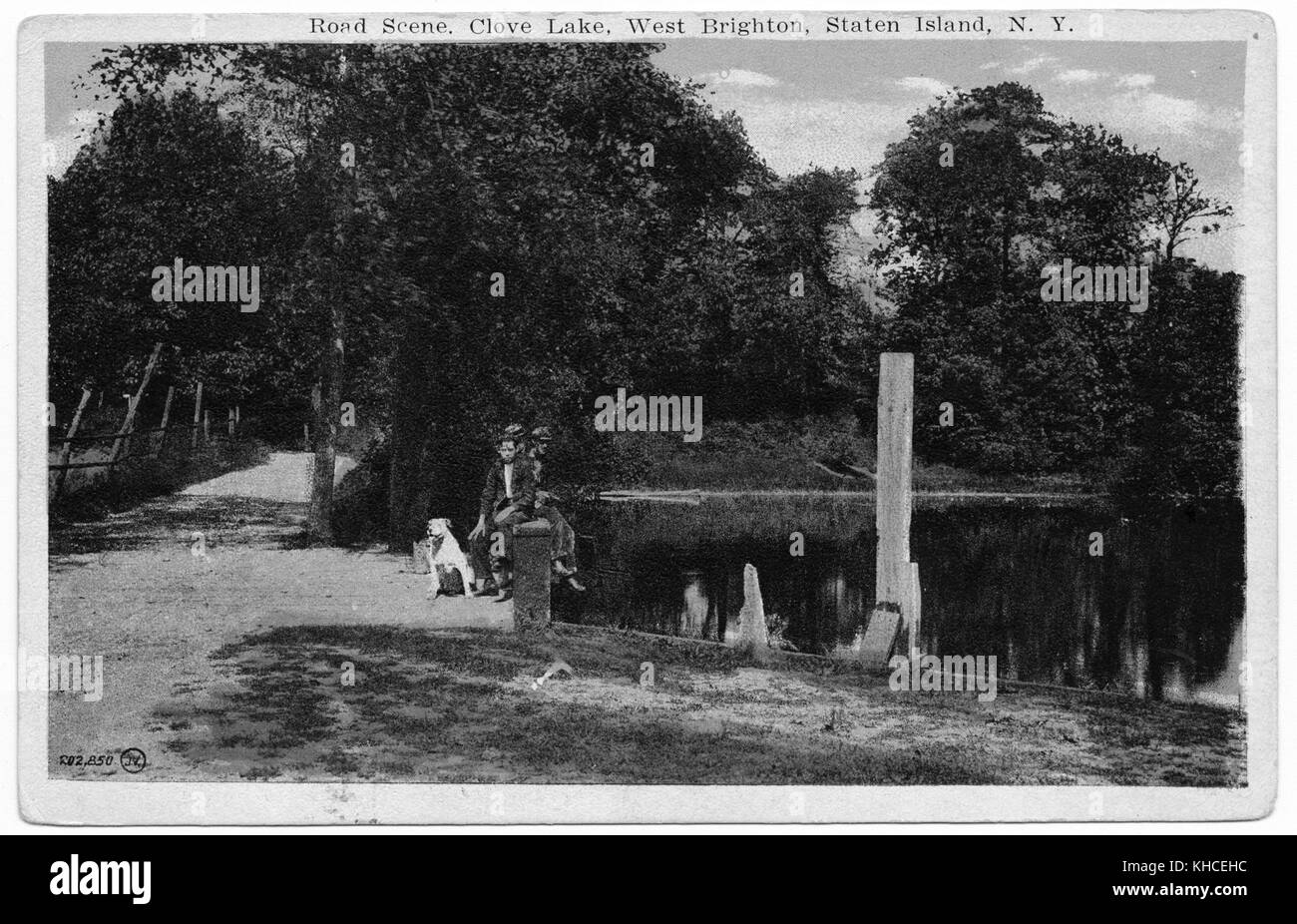 A postcard from an painting, a man and a dog are depicted at rest by the edge of Clove Lake, the landscape consists of a dirt road lined by trees and a wooden fence, West Brighton, Staten Island, New York, 1900. From the New York Public Library. Stock Photohttps://www.alamy.com/image-license-details/?v=1https://www.alamy.com/stock-image-a-postcard-from-an-painting-a-man-and-a-dog-are-depicted-at-rest-by-165617352.html
A postcard from an painting, a man and a dog are depicted at rest by the edge of Clove Lake, the landscape consists of a dirt road lined by trees and a wooden fence, West Brighton, Staten Island, New York, 1900. From the New York Public Library. Stock Photohttps://www.alamy.com/image-license-details/?v=1https://www.alamy.com/stock-image-a-postcard-from-an-painting-a-man-and-a-dog-are-depicted-at-rest-by-165617352.htmlRMKHCEHC–A postcard from an painting, a man and a dog are depicted at rest by the edge of Clove Lake, the landscape consists of a dirt road lined by trees and a wooden fence, West Brighton, Staten Island, New York, 1900. From the New York Public Library.
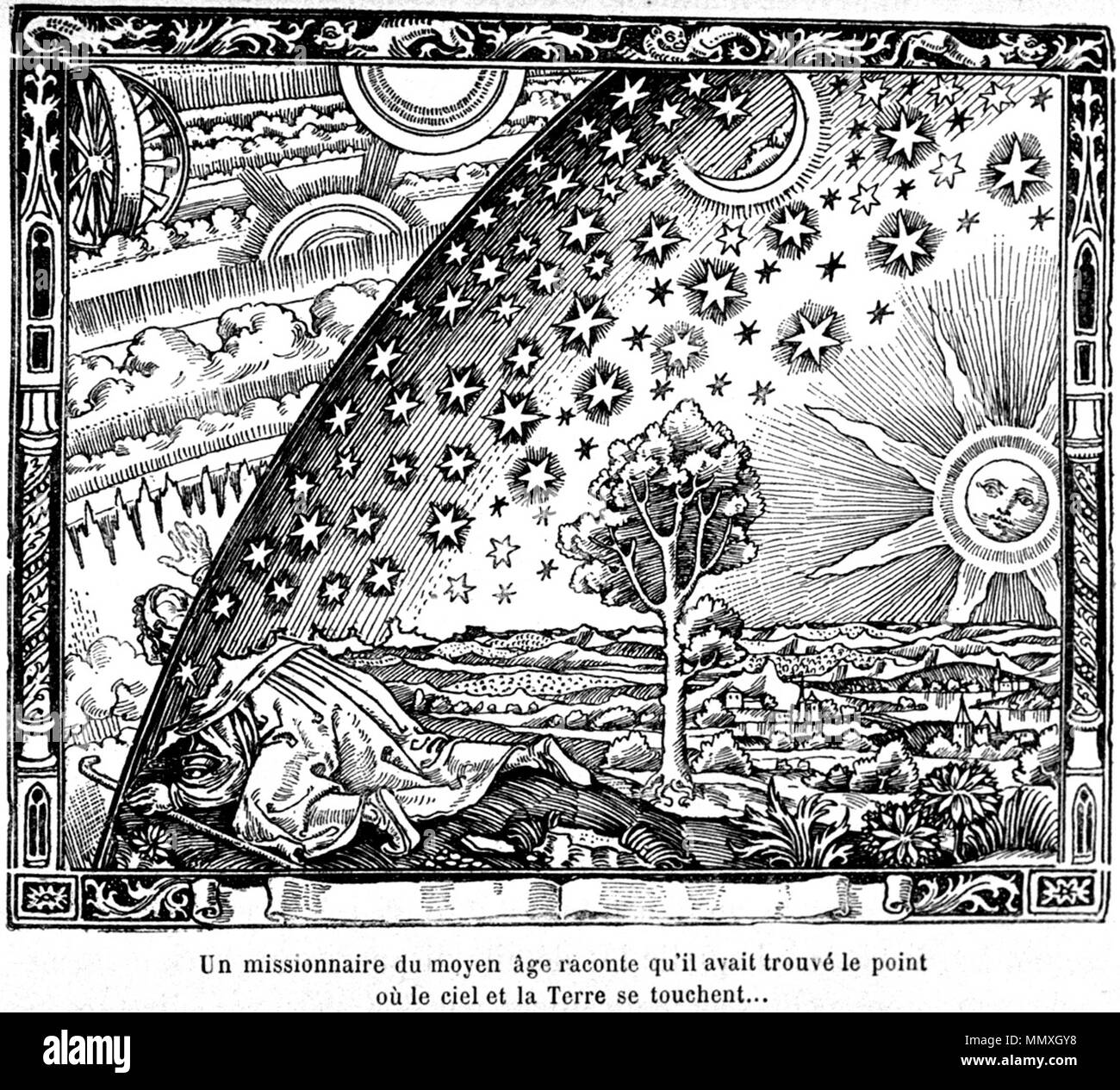 . English: The Flammarion engraving is a wood engraving by an unknown artist that first appeared in Camille Flammarion's L'atmosphère: météorologie populaire (1888). The image depicts a man crawling under the edge of the sky, depicted as if it were a solid hemisphere, to look at the mysterious Empyrean beyond. The caption translates to 'A medieval missionary tells that he has found the point where heaven and Earth meet...' . 1888. Anonymous FlammarionWoodcut Stock Photohttps://www.alamy.com/image-license-details/?v=1https://www.alamy.com/english-the-flammarion-engraving-is-a-wood-engraving-by-an-unknown-artist-that-first-appeared-in-camille-flammarions-latmosphre-mtorologie-populaire-1888-the-image-depicts-a-man-crawling-under-the-edge-of-the-sky-depicted-as-if-it-were-a-solid-hemisphere-to-look-at-the-mysterious-empyrean-beyond-the-caption-translates-to-a-medieval-missionary-tells-that-he-has-found-the-point-where-heaven-and-earth-meet-1888-anonymous-flammarionwoodcut-image184980860.html
. English: The Flammarion engraving is a wood engraving by an unknown artist that first appeared in Camille Flammarion's L'atmosphère: météorologie populaire (1888). The image depicts a man crawling under the edge of the sky, depicted as if it were a solid hemisphere, to look at the mysterious Empyrean beyond. The caption translates to 'A medieval missionary tells that he has found the point where heaven and Earth meet...' . 1888. Anonymous FlammarionWoodcut Stock Photohttps://www.alamy.com/image-license-details/?v=1https://www.alamy.com/english-the-flammarion-engraving-is-a-wood-engraving-by-an-unknown-artist-that-first-appeared-in-camille-flammarions-latmosphre-mtorologie-populaire-1888-the-image-depicts-a-man-crawling-under-the-edge-of-the-sky-depicted-as-if-it-were-a-solid-hemisphere-to-look-at-the-mysterious-empyrean-beyond-the-caption-translates-to-a-medieval-missionary-tells-that-he-has-found-the-point-where-heaven-and-earth-meet-1888-anonymous-flammarionwoodcut-image184980860.htmlRMMMXGY8–. English: The Flammarion engraving is a wood engraving by an unknown artist that first appeared in Camille Flammarion's L'atmosphère: météorologie populaire (1888). The image depicts a man crawling under the edge of the sky, depicted as if it were a solid hemisphere, to look at the mysterious Empyrean beyond. The caption translates to 'A medieval missionary tells that he has found the point where heaven and Earth meet...' . 1888. Anonymous FlammarionWoodcut
 'Participants of the parade on the occasion of the VDA conference in Passau carry a banner on which are depicted the German Reich and the ''German borderland'' along with the population figures 64 million and 16 million. Below it, between two swastikas, is the inscription ''Greater Germany. 80 million awake''. Behind the banner is a delegation of the Alte Gymnasium in Nuremberg. In the foreground a woman is wearing a swastika as decoration. On the left edge of the picture is a group of men in traditional costume.' Stock Photohttps://www.alamy.com/image-license-details/?v=1https://www.alamy.com/participants-of-the-parade-on-the-occasion-of-the-vda-conference-in-passau-carry-a-banner-on-which-are-depicted-the-german-reich-and-the-german-borderland-along-with-the-population-figures-64-million-and-16-million-below-it-between-two-swastikas-is-the-inscription-greater-germany-80-million-awake-behind-the-banner-is-a-delegation-of-the-alte-gymnasium-in-nuremberg-in-the-foreground-a-woman-is-wearing-a-swastika-as-decoration-on-the-left-edge-of-the-picture-is-a-group-of-men-in-traditional-costume-image385782664.html
'Participants of the parade on the occasion of the VDA conference in Passau carry a banner on which are depicted the German Reich and the ''German borderland'' along with the population figures 64 million and 16 million. Below it, between two swastikas, is the inscription ''Greater Germany. 80 million awake''. Behind the banner is a delegation of the Alte Gymnasium in Nuremberg. In the foreground a woman is wearing a swastika as decoration. On the left edge of the picture is a group of men in traditional costume.' Stock Photohttps://www.alamy.com/image-license-details/?v=1https://www.alamy.com/participants-of-the-parade-on-the-occasion-of-the-vda-conference-in-passau-carry-a-banner-on-which-are-depicted-the-german-reich-and-the-german-borderland-along-with-the-population-figures-64-million-and-16-million-below-it-between-two-swastikas-is-the-inscription-greater-germany-80-million-awake-behind-the-banner-is-a-delegation-of-the-alte-gymnasium-in-nuremberg-in-the-foreground-a-woman-is-wearing-a-swastika-as-decoration-on-the-left-edge-of-the-picture-is-a-group-of-men-in-traditional-costume-image385782664.htmlRM2DBHWM8–'Participants of the parade on the occasion of the VDA conference in Passau carry a banner on which are depicted the German Reich and the ''German borderland'' along with the population figures 64 million and 16 million. Below it, between two swastikas, is the inscription ''Greater Germany. 80 million awake''. Behind the banner is a delegation of the Alte Gymnasium in Nuremberg. In the foreground a woman is wearing a swastika as decoration. On the left edge of the picture is a group of men in traditional costume.'
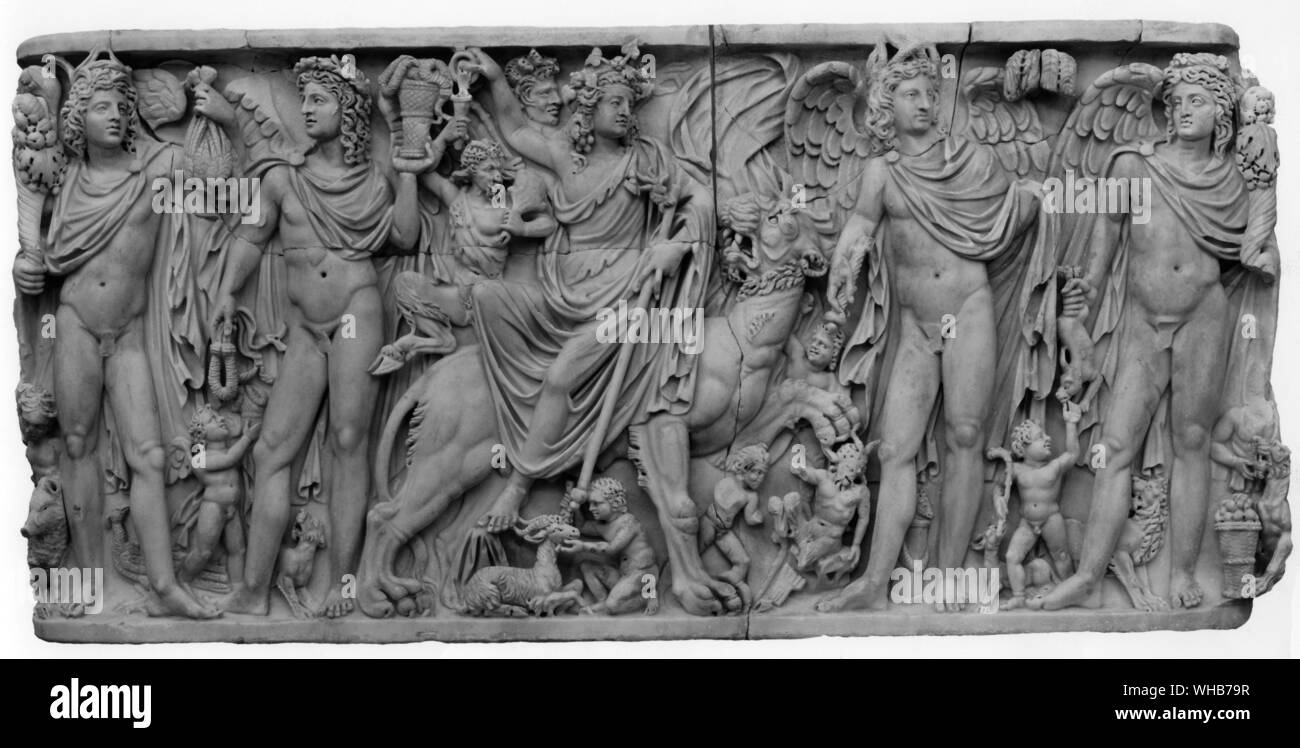 Spirits of the corn. Greek myth told of the triumphal progress of Dionysus god of the vine and of ecstasy the god travelled to the edge of the known world and won mankind to his worship and the cultivation of vines. Dionysus was killed by the Titans creatures of an earlier epoch who mangled his body as the grape is mangled to extract its juice for wine. Hence later in antiquity the triumph of Dionysus was understood as a sign of the afterlife and was therefore often depicted on sarcophagi. The triumphal progress of Dionysus with the four seasons. Roman Sarcophagus . Stock Photohttps://www.alamy.com/image-license-details/?v=1https://www.alamy.com/spirits-of-the-corn-greek-myth-told-of-the-triumphal-progress-of-dionysus-god-of-the-vine-and-of-ecstasy-the-god-travelled-to-the-edge-of-the-known-world-and-won-mankind-to-his-worship-and-the-cultivation-of-vines-dionysus-was-killed-by-the-titans-creatures-of-an-earlier-epoch-who-mangled-his-body-as-the-grape-is-mangled-to-extract-its-juice-for-wine-hence-later-in-antiquity-the-triumph-of-dionysus-was-understood-as-a-sign-of-the-afterlife-and-was-therefore-often-depicted-on-sarcophagi-the-triumphal-progress-of-dionysus-with-the-four-seasons-roman-sarcophagus-image268851907.html
Spirits of the corn. Greek myth told of the triumphal progress of Dionysus god of the vine and of ecstasy the god travelled to the edge of the known world and won mankind to his worship and the cultivation of vines. Dionysus was killed by the Titans creatures of an earlier epoch who mangled his body as the grape is mangled to extract its juice for wine. Hence later in antiquity the triumph of Dionysus was understood as a sign of the afterlife and was therefore often depicted on sarcophagi. The triumphal progress of Dionysus with the four seasons. Roman Sarcophagus . Stock Photohttps://www.alamy.com/image-license-details/?v=1https://www.alamy.com/spirits-of-the-corn-greek-myth-told-of-the-triumphal-progress-of-dionysus-god-of-the-vine-and-of-ecstasy-the-god-travelled-to-the-edge-of-the-known-world-and-won-mankind-to-his-worship-and-the-cultivation-of-vines-dionysus-was-killed-by-the-titans-creatures-of-an-earlier-epoch-who-mangled-his-body-as-the-grape-is-mangled-to-extract-its-juice-for-wine-hence-later-in-antiquity-the-triumph-of-dionysus-was-understood-as-a-sign-of-the-afterlife-and-was-therefore-often-depicted-on-sarcophagi-the-triumphal-progress-of-dionysus-with-the-four-seasons-roman-sarcophagus-image268851907.htmlRMWHB79R–Spirits of the corn. Greek myth told of the triumphal progress of Dionysus god of the vine and of ecstasy the god travelled to the edge of the known world and won mankind to his worship and the cultivation of vines. Dionysus was killed by the Titans creatures of an earlier epoch who mangled his body as the grape is mangled to extract its juice for wine. Hence later in antiquity the triumph of Dionysus was understood as a sign of the afterlife and was therefore often depicted on sarcophagi. The triumphal progress of Dionysus with the four seasons. Roman Sarcophagus .
 Paris - low level aerial photo centered on the Palais Garnier and Place d Opera, 1944. A highly detailed photo taken by air from perhaps above Richelieu – Drouot Metro looks into the complex of buildings and open space around the Place d Opera. The camera looks west with Boulevard des Capucines running from the bottom center of the image to the upper left. Boulevard Haussmann is depicted from bottom to top along the right edge of the image.We know that this photo was taken prior to the 25 August 1944 liberation. Stock Photohttps://www.alamy.com/image-license-details/?v=1https://www.alamy.com/paris-low-level-aerial-photo-centered-on-the-palais-garnier-and-place-d-opera-1944-a-highly-detailed-photo-taken-by-air-from-perhaps-above-richelieu-drouot-metro-looks-into-the-complex-of-buildings-and-open-space-around-the-place-d-opera-the-camera-looks-west-with-boulevard-des-capucines-running-from-the-bottom-center-of-the-image-to-the-upper-left-boulevard-haussmann-is-depicted-from-bottom-to-top-along-the-right-edge-of-the-imagewe-know-that-this-photo-was-taken-prior-to-the-25-august-1944-liberation-image454052510.html
Paris - low level aerial photo centered on the Palais Garnier and Place d Opera, 1944. A highly detailed photo taken by air from perhaps above Richelieu – Drouot Metro looks into the complex of buildings and open space around the Place d Opera. The camera looks west with Boulevard des Capucines running from the bottom center of the image to the upper left. Boulevard Haussmann is depicted from bottom to top along the right edge of the image.We know that this photo was taken prior to the 25 August 1944 liberation. Stock Photohttps://www.alamy.com/image-license-details/?v=1https://www.alamy.com/paris-low-level-aerial-photo-centered-on-the-palais-garnier-and-place-d-opera-1944-a-highly-detailed-photo-taken-by-air-from-perhaps-above-richelieu-drouot-metro-looks-into-the-complex-of-buildings-and-open-space-around-the-place-d-opera-the-camera-looks-west-with-boulevard-des-capucines-running-from-the-bottom-center-of-the-image-to-the-upper-left-boulevard-haussmann-is-depicted-from-bottom-to-top-along-the-right-edge-of-the-imagewe-know-that-this-photo-was-taken-prior-to-the-25-august-1944-liberation-image454052510.htmlRF2HAKTH2–Paris - low level aerial photo centered on the Palais Garnier and Place d Opera, 1944. A highly detailed photo taken by air from perhaps above Richelieu – Drouot Metro looks into the complex of buildings and open space around the Place d Opera. The camera looks west with Boulevard des Capucines running from the bottom center of the image to the upper left. Boulevard Haussmann is depicted from bottom to top along the right edge of the image.We know that this photo was taken prior to the 25 August 1944 liberation.
 Five plates from the gravestone of Gijsbert Willemsz. Raet in Gouda, The five plates are cast and have cut-out and engraved representations that were originally fully or partially colored. The middle part consists of a triangle placed at a point, the sides of which are broken through by braces. A barefoot angel with a halo around his head is depicted in the field against a vegetative background. He holds up two coats of arms with the help of belts. The right arm is divided: 1. in red the Holy Sepulcher with a Jerusalem cross above it. 2. a Catharinarad, pierced with two swords. The left arm: a Stock Photohttps://www.alamy.com/image-license-details/?v=1https://www.alamy.com/five-plates-from-the-gravestone-of-gijsbert-willemsz-raet-in-gouda-the-five-plates-are-cast-and-have-cut-out-and-engraved-representations-that-were-originally-fully-or-partially-colored-the-middle-part-consists-of-a-triangle-placed-at-a-point-the-sides-of-which-are-broken-through-by-braces-a-barefoot-angel-with-a-halo-around-his-head-is-depicted-in-the-field-against-a-vegetative-background-he-holds-up-two-coats-of-arms-with-the-help-of-belts-the-right-arm-is-divided-1-in-red-the-holy-sepulcher-with-a-jerusalem-cross-above-it-2-a-catharinarad-pierced-with-two-swords-the-left-arm-a-image261368364.html
Five plates from the gravestone of Gijsbert Willemsz. Raet in Gouda, The five plates are cast and have cut-out and engraved representations that were originally fully or partially colored. The middle part consists of a triangle placed at a point, the sides of which are broken through by braces. A barefoot angel with a halo around his head is depicted in the field against a vegetative background. He holds up two coats of arms with the help of belts. The right arm is divided: 1. in red the Holy Sepulcher with a Jerusalem cross above it. 2. a Catharinarad, pierced with two swords. The left arm: a Stock Photohttps://www.alamy.com/image-license-details/?v=1https://www.alamy.com/five-plates-from-the-gravestone-of-gijsbert-willemsz-raet-in-gouda-the-five-plates-are-cast-and-have-cut-out-and-engraved-representations-that-were-originally-fully-or-partially-colored-the-middle-part-consists-of-a-triangle-placed-at-a-point-the-sides-of-which-are-broken-through-by-braces-a-barefoot-angel-with-a-halo-around-his-head-is-depicted-in-the-field-against-a-vegetative-background-he-holds-up-two-coats-of-arms-with-the-help-of-belts-the-right-arm-is-divided-1-in-red-the-holy-sepulcher-with-a-jerusalem-cross-above-it-2-a-catharinarad-pierced-with-two-swords-the-left-arm-a-image261368364.htmlRMW56A0C–Five plates from the gravestone of Gijsbert Willemsz. Raet in Gouda, The five plates are cast and have cut-out and engraved representations that were originally fully or partially colored. The middle part consists of a triangle placed at a point, the sides of which are broken through by braces. A barefoot angel with a halo around his head is depicted in the field against a vegetative background. He holds up two coats of arms with the help of belts. The right arm is divided: 1. in red the Holy Sepulcher with a Jerusalem cross above it. 2. a Catharinarad, pierced with two swords. The left arm: a
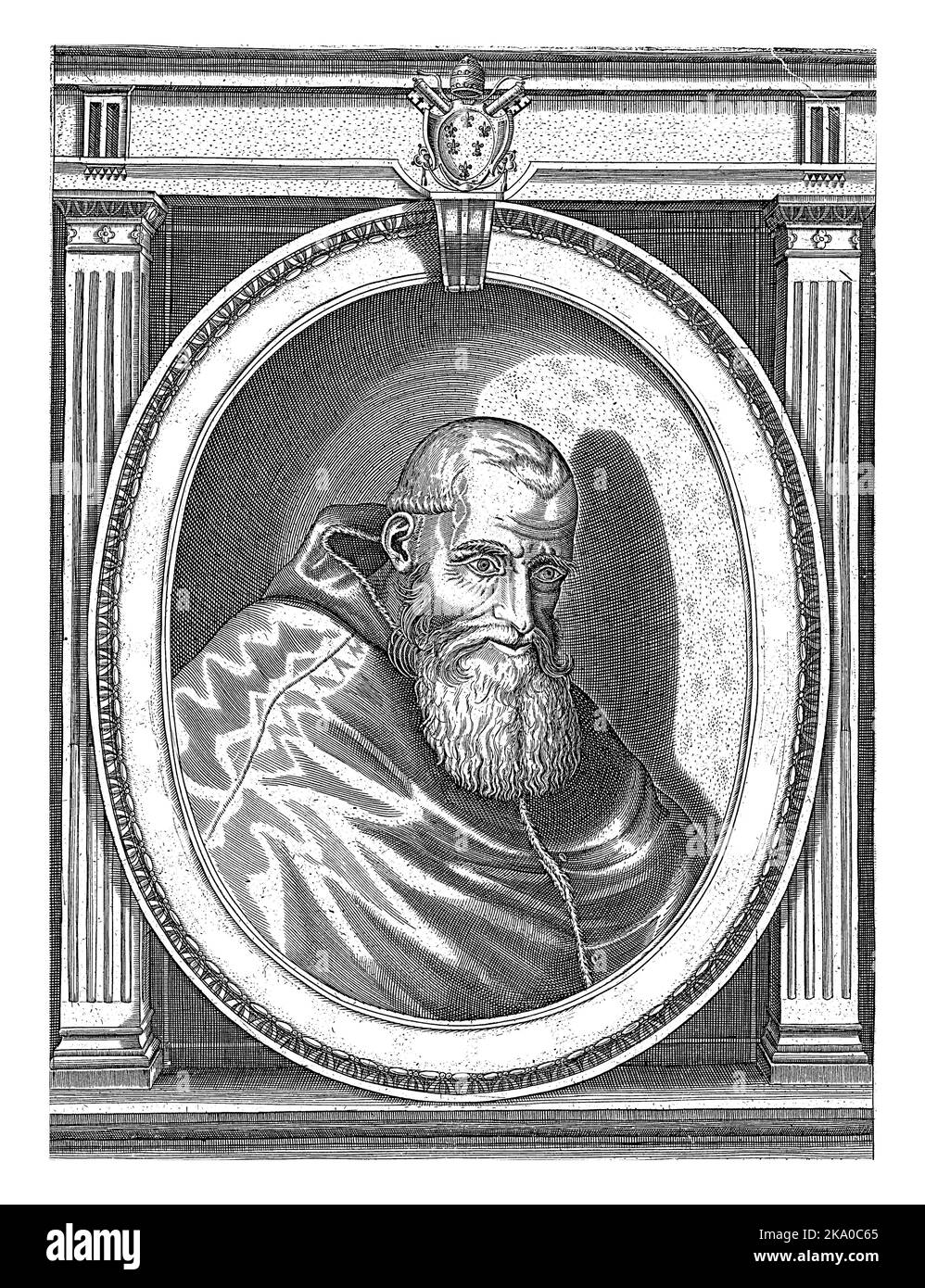 Portrait of Pope Paul III dressed in the papal robes. Bust to the right in an oval frame with edge lettering. His papal coat of arms is depicted above Stock Photohttps://www.alamy.com/image-license-details/?v=1https://www.alamy.com/portrait-of-pope-paul-iii-dressed-in-the-papal-robes-bust-to-the-right-in-an-oval-frame-with-edge-lettering-his-papal-coat-of-arms-is-depicted-above-image488046445.html
Portrait of Pope Paul III dressed in the papal robes. Bust to the right in an oval frame with edge lettering. His papal coat of arms is depicted above Stock Photohttps://www.alamy.com/image-license-details/?v=1https://www.alamy.com/portrait-of-pope-paul-iii-dressed-in-the-papal-robes-bust-to-the-right-in-an-oval-frame-with-edge-lettering-his-papal-coat-of-arms-is-depicted-above-image488046445.htmlRF2KA0C65–Portrait of Pope Paul III dressed in the papal robes. Bust to the right in an oval frame with edge lettering. His papal coat of arms is depicted above
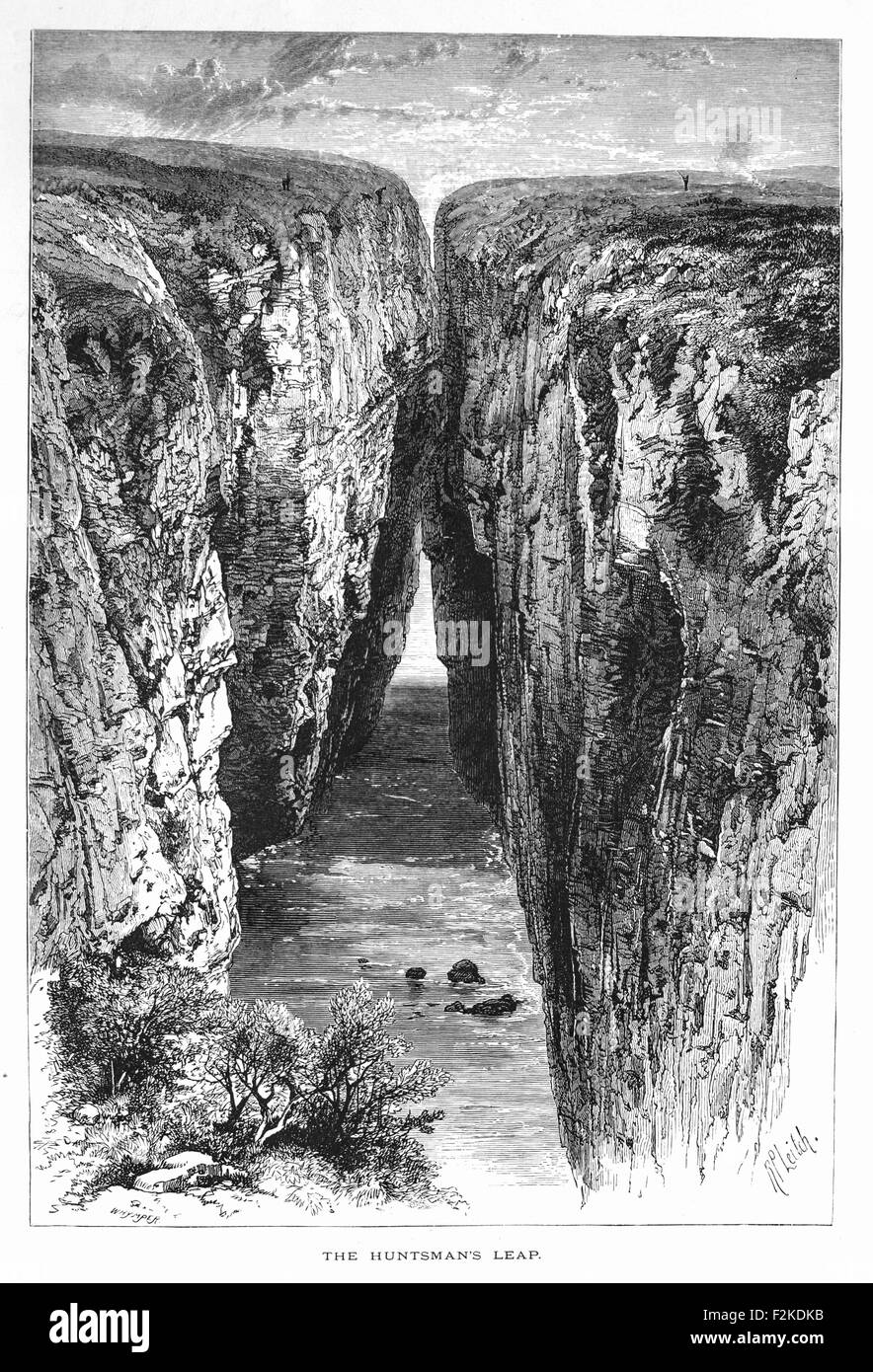 Wood Engraving of the Huntsmans Leap on the Pembrokeshire Coast Path, Wales, UK, EuropeIllustration from 'The British isles - Cassell Petter & Galpin Part 6 Picturesque Europe. Picturesque Europe was an illustrated set of Magazines published by Cassell, Petter, Galpin & Co. of London, Paris and New York in 1877. The publications depicted tourist haunts in Europe, with text descriptions and steel and wood engravings by eminent artists of the time, such as Harry Fenn, William H J Boot, Thomas C. L. Rowbotham, Henry T. Green , Myles B. Foster, John Mogford , David H. McKewan, William L. Leitch. Stock Photohttps://www.alamy.com/image-license-details/?v=1https://www.alamy.com/stock-photo-wood-engraving-of-the-huntsmans-leap-on-the-pembrokeshire-coast-path-87708975.html
Wood Engraving of the Huntsmans Leap on the Pembrokeshire Coast Path, Wales, UK, EuropeIllustration from 'The British isles - Cassell Petter & Galpin Part 6 Picturesque Europe. Picturesque Europe was an illustrated set of Magazines published by Cassell, Petter, Galpin & Co. of London, Paris and New York in 1877. The publications depicted tourist haunts in Europe, with text descriptions and steel and wood engravings by eminent artists of the time, such as Harry Fenn, William H J Boot, Thomas C. L. Rowbotham, Henry T. Green , Myles B. Foster, John Mogford , David H. McKewan, William L. Leitch. Stock Photohttps://www.alamy.com/image-license-details/?v=1https://www.alamy.com/stock-photo-wood-engraving-of-the-huntsmans-leap-on-the-pembrokeshire-coast-path-87708975.htmlRMF2KDKB–Wood Engraving of the Huntsmans Leap on the Pembrokeshire Coast Path, Wales, UK, EuropeIllustration from 'The British isles - Cassell Petter & Galpin Part 6 Picturesque Europe. Picturesque Europe was an illustrated set of Magazines published by Cassell, Petter, Galpin & Co. of London, Paris and New York in 1877. The publications depicted tourist haunts in Europe, with text descriptions and steel and wood engravings by eminent artists of the time, such as Harry Fenn, William H J Boot, Thomas C. L. Rowbotham, Henry T. Green , Myles B. Foster, John Mogford , David H. McKewan, William L. Leitch.
 The Vessel of Prince Chingodzin, on which the Russian Messenger Sailed to Shore, 1813. In 1803-06, Captain I. F. Kruzenshtern became the first Russian to circumnavigate the globe. This atlas, published by the Russian Academy of Sciences in 1813, includes maps of Kruzenshtern's route and 109 plates based upon the drawings of V. G. Tilesius, a doctor, naturalist, and the official artist of the expedition. It is one of the largest publications of engravings from tsarist Russia. The subjects depicted include views of Sakhalin, Kamchatka, and the Kurile Islands; representations of Siberian natives Stock Photohttps://www.alamy.com/image-license-details/?v=1https://www.alamy.com/the-vessel-of-prince-chingodzin-on-which-the-russian-messenger-sailed-to-shore-1813-in-1803-06-captain-i-f-kruzenshtern-became-the-first-russian-to-circumnavigate-the-globe-this-atlas-published-by-the-russian-academy-of-sciences-in-1813-includes-maps-of-kruzenshterns-route-and-109-plates-based-upon-the-drawings-of-v-g-tilesius-a-doctor-naturalist-and-the-official-artist-of-the-expedition-it-is-one-of-the-largest-publications-of-engravings-from-tsarist-russia-the-subjects-depicted-include-views-of-sakhalin-kamchatka-and-the-kurile-islands-representations-of-siberian-natives-image595007641.html
The Vessel of Prince Chingodzin, on which the Russian Messenger Sailed to Shore, 1813. In 1803-06, Captain I. F. Kruzenshtern became the first Russian to circumnavigate the globe. This atlas, published by the Russian Academy of Sciences in 1813, includes maps of Kruzenshtern's route and 109 plates based upon the drawings of V. G. Tilesius, a doctor, naturalist, and the official artist of the expedition. It is one of the largest publications of engravings from tsarist Russia. The subjects depicted include views of Sakhalin, Kamchatka, and the Kurile Islands; representations of Siberian natives Stock Photohttps://www.alamy.com/image-license-details/?v=1https://www.alamy.com/the-vessel-of-prince-chingodzin-on-which-the-russian-messenger-sailed-to-shore-1813-in-1803-06-captain-i-f-kruzenshtern-became-the-first-russian-to-circumnavigate-the-globe-this-atlas-published-by-the-russian-academy-of-sciences-in-1813-includes-maps-of-kruzenshterns-route-and-109-plates-based-upon-the-drawings-of-v-g-tilesius-a-doctor-naturalist-and-the-official-artist-of-the-expedition-it-is-one-of-the-largest-publications-of-engravings-from-tsarist-russia-the-subjects-depicted-include-views-of-sakhalin-kamchatka-and-the-kurile-islands-representations-of-siberian-natives-image595007641.htmlRM2WG0X8W–The Vessel of Prince Chingodzin, on which the Russian Messenger Sailed to Shore, 1813. In 1803-06, Captain I. F. Kruzenshtern became the first Russian to circumnavigate the globe. This atlas, published by the Russian Academy of Sciences in 1813, includes maps of Kruzenshtern's route and 109 plates based upon the drawings of V. G. Tilesius, a doctor, naturalist, and the official artist of the expedition. It is one of the largest publications of engravings from tsarist Russia. The subjects depicted include views of Sakhalin, Kamchatka, and the Kurile Islands; representations of Siberian natives
 Soay Sheep Ewe is depicted with its lamb at Cheddar Gorge, Somerset Stock Photohttps://www.alamy.com/image-license-details/?v=1https://www.alamy.com/stock-image-soay-sheep-ewe-is-depicted-with-its-lamb-at-cheddar-gorge-somerset-165443028.html
Soay Sheep Ewe is depicted with its lamb at Cheddar Gorge, Somerset Stock Photohttps://www.alamy.com/image-license-details/?v=1https://www.alamy.com/stock-image-soay-sheep-ewe-is-depicted-with-its-lamb-at-cheddar-gorge-somerset-165443028.htmlRFKH4G7G–Soay Sheep Ewe is depicted with its lamb at Cheddar Gorge, Somerset
 1 fils, Faisal II. Reverse of 1 fils 1953 year, Iraq. Translation: 1 Fils, 1953, 1372, Kingdom of Iraq. The coin is depicted in black and white. Vecto Stock Vectorhttps://www.alamy.com/image-license-details/?v=1https://www.alamy.com/1-fils-faisal-ii-reverse-of-1-fils-1953-year-iraq-translation-1-fils-1953-1372-kingdom-of-iraq-the-coin-is-depicted-in-black-and-white-vecto-image622798182.html
1 fils, Faisal II. Reverse of 1 fils 1953 year, Iraq. Translation: 1 Fils, 1953, 1372, Kingdom of Iraq. The coin is depicted in black and white. Vecto Stock Vectorhttps://www.alamy.com/image-license-details/?v=1https://www.alamy.com/1-fils-faisal-ii-reverse-of-1-fils-1953-year-iraq-translation-1-fils-1953-1372-kingdom-of-iraq-the-coin-is-depicted-in-black-and-white-vecto-image622798182.htmlRF2Y56WC6–1 fils, Faisal II. Reverse of 1 fils 1953 year, Iraq. Translation: 1 Fils, 1953, 1372, Kingdom of Iraq. The coin is depicted in black and white. Vecto
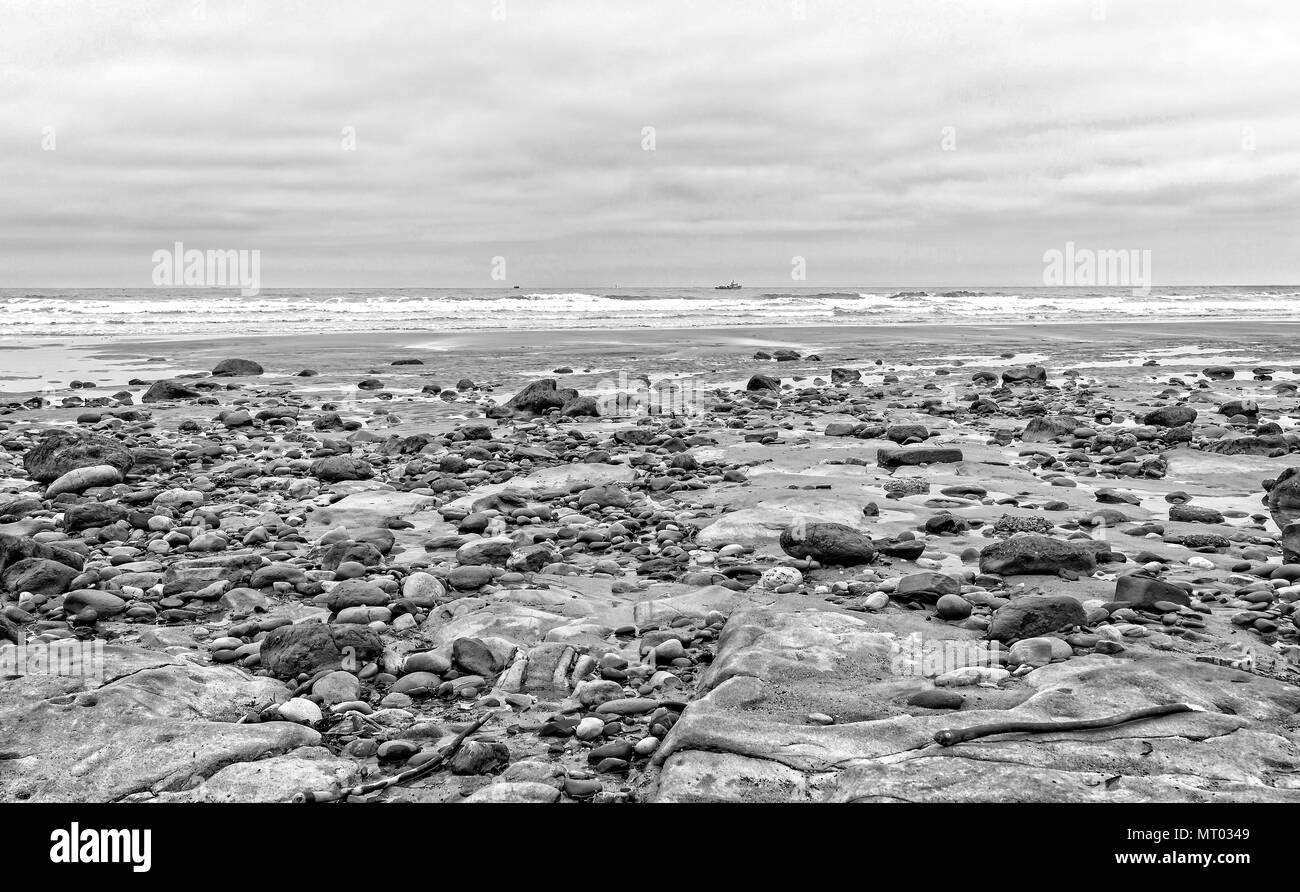 Beach at low tide with rocks and sand channels depicted in black and white. Stock Photohttps://www.alamy.com/image-license-details/?v=1https://www.alamy.com/beach-at-low-tide-with-rocks-and-sand-channels-depicted-in-black-and-white-image186857897.html
Beach at low tide with rocks and sand channels depicted in black and white. Stock Photohttps://www.alamy.com/image-license-details/?v=1https://www.alamy.com/beach-at-low-tide-with-rocks-and-sand-channels-depicted-in-black-and-white-image186857897.htmlRFMT0349–Beach at low tide with rocks and sand channels depicted in black and white.
 1 fils, Faisal II. Reverse of 1 fils 1953 year, Iraq. Translation: 1 Fils, 1953, 1372, Kingdom of Iraq. The coin is depicted in black and white. Vecto Stock Vectorhttps://www.alamy.com/image-license-details/?v=1https://www.alamy.com/1-fils-faisal-ii-reverse-of-1-fils-1953-year-iraq-translation-1-fils-1953-1372-kingdom-of-iraq-the-coin-is-depicted-in-black-and-white-vecto-image622798082.html
1 fils, Faisal II. Reverse of 1 fils 1953 year, Iraq. Translation: 1 Fils, 1953, 1372, Kingdom of Iraq. The coin is depicted in black and white. Vecto Stock Vectorhttps://www.alamy.com/image-license-details/?v=1https://www.alamy.com/1-fils-faisal-ii-reverse-of-1-fils-1953-year-iraq-translation-1-fils-1953-1372-kingdom-of-iraq-the-coin-is-depicted-in-black-and-white-vecto-image622798082.htmlRF2Y56W8J–1 fils, Faisal II. Reverse of 1 fils 1953 year, Iraq. Translation: 1 Fils, 1953, 1372, Kingdom of Iraq. The coin is depicted in black and white. Vecto